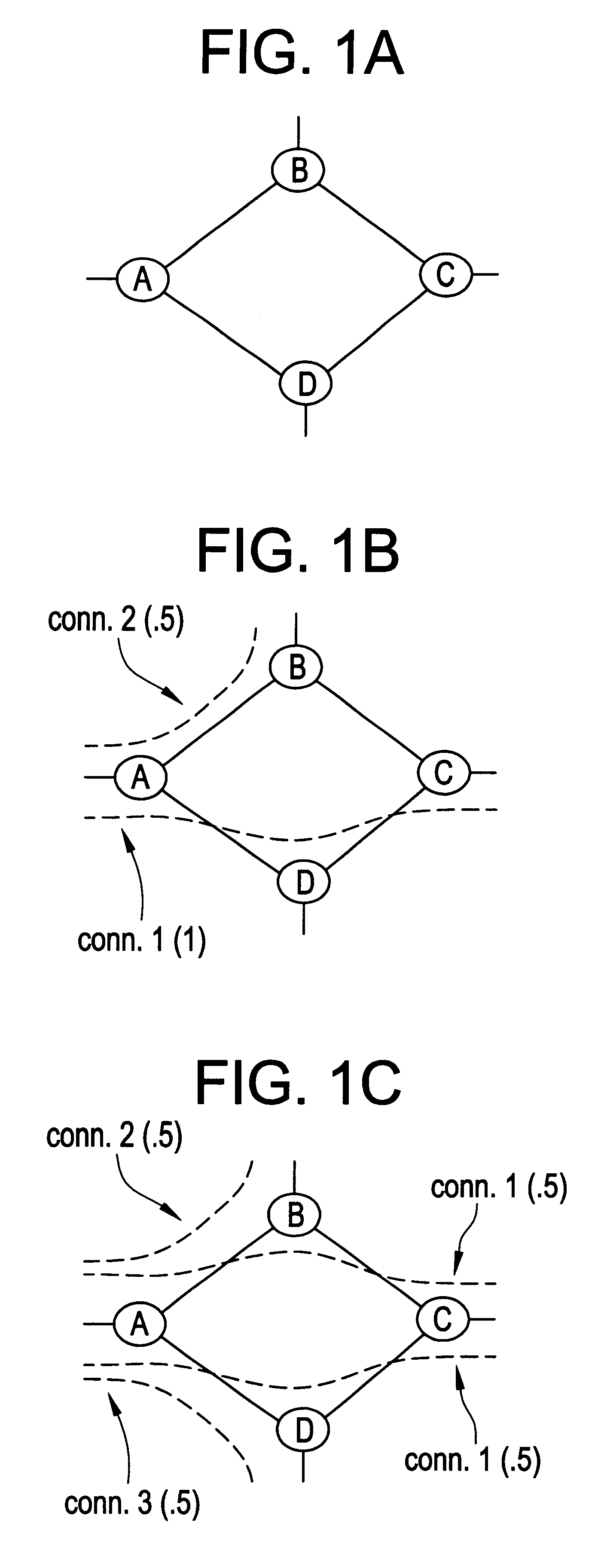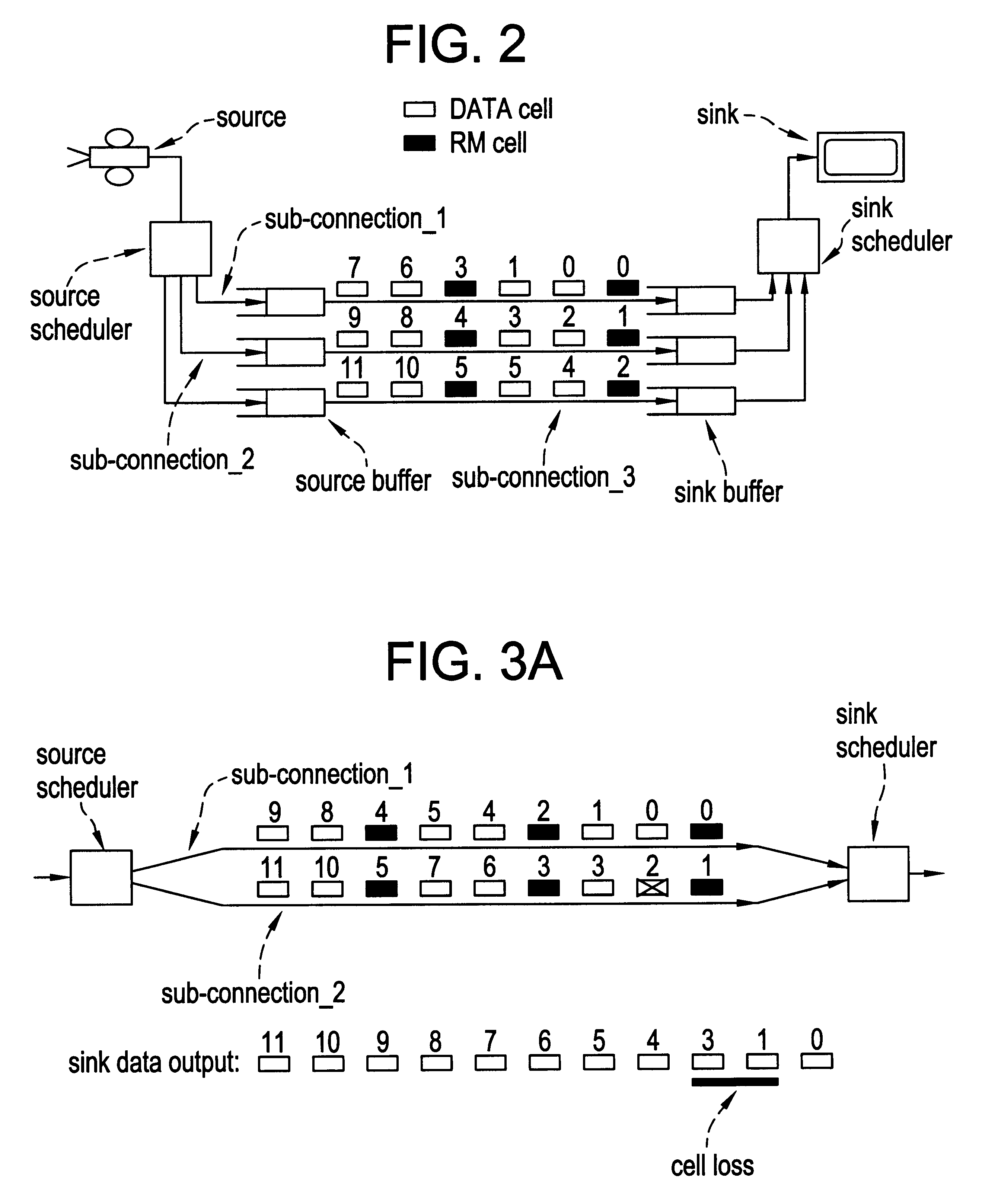Connection splitting: an efficient way of reducing call blocking in ATM
a technology of atm connection and connection splitter, which is applied in the field of atm connection splitter, can solve the problem of avoiding completely out-of-order delivery, and achieve the effect of reducing call blocking and less bandwidth fragmentation
- Summary
- Abstract
- Description
- Claims
- Application Information
AI Technical Summary
Benefits of technology
Problems solved by technology
Method used
Image
Examples
Embodiment Construction
IVA. Splitting Architecture
Splitting of a connection is performed by setting up multiple end-to-end sub-connections and distributing the cell flow of the original connection among these sub-connections. An example of a preferred embodiment depicting the splitting scenario is illustrated in FIGS. 1(a)-(c).
FIG. 1(a) shows the network topology where each link has one unit of bandwidth. Consider a traffic scenario in which there are three connections with the following bandwidth requirements. Connection A.fwdarw.C requires one unit whereas connection A.fwdarw.B and A.fwdarw.D both require 0.5 units of bandwidth. With conventional routing (FIG. 1(b)), the network can support connection A.fwdarw.C and either A.fwdarw.B or A.fwdarw.D but not both. In this case the utilized hop-bandwidth product is 2.5 which is only 62.5% of the total network hop-bandwidth product of 4.
Now consider the connection-splitting scenario in FIG. 1(c) where connection A.fwdarw.C is split into two sub-connections; ...
PUM
 Login to View More
Login to View More Abstract
Description
Claims
Application Information
 Login to View More
Login to View More - R&D
- Intellectual Property
- Life Sciences
- Materials
- Tech Scout
- Unparalleled Data Quality
- Higher Quality Content
- 60% Fewer Hallucinations
Browse by: Latest US Patents, China's latest patents, Technical Efficacy Thesaurus, Application Domain, Technology Topic, Popular Technical Reports.
© 2025 PatSnap. All rights reserved.Legal|Privacy policy|Modern Slavery Act Transparency Statement|Sitemap|About US| Contact US: help@patsnap.com



